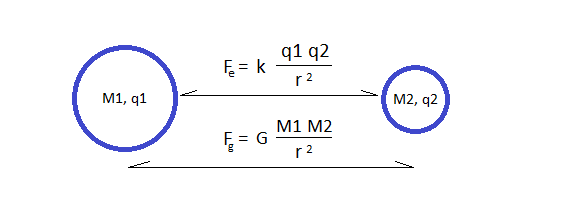The NASA DART probe that hit the asteroid Dimorphos on September 27 has shortened Dimorphos’ orbit around its larger parent asteroid Didymos by 32 minutes. Its 11 hour and 55-minute orbit has been reduced to 11 hours and 23 minutes. That's a reduction of about 3%, three times more than NASA predicted.
My guess was that NASA would find it harder to change the orbit than they predicted, but that didn't happen.
I've also made a more speculative suggestion, that the orbit may partially or fully restore to its original due to the dual workings of gravitational attraction and electric repulsion, which should work as a shock absorber. However, it's too early to say if this will happen. It's also something that no-one else is expecting, and therefore something that may not be widely reported on.
 |
| Gravitational attraction and electrostatic repulsion |
Telescope images taken in the hours immediately after the impact showed a relatively stable, star-like pattern of ejected dust and debris, not the nebulous cloud we might have expected. This pattern has since become more pronounced.
The image shown in NASA's latest article is of an elongated jet extending from the asteroid. NASA's article gives no explanation for the shape of the jet but gives it credit for having made the impact more effective than expected. My thinking is that the jet is shaped by the solar wind, aka plasma current emanating from the sun.
 |
| Dimorphos 285 hours after impact |
By NASA - https://www.nasa.gov/sites/default/files/thumbnails/image/3.2_dart_compass_draft2.png
No comments:
Post a Comment